Table DISPLAY_TAB below is a self-reference table that can contain both parent and child tabs. A parent tab can have multiple child tabs and a child tab can belong to multiple parents.
I'd like to establish a CASCADE DELETE relationship between main table and relationship table DISPLAY_TAB_GROUPING so when either parent or child tab is deleted - relationship is automatically deleted as well (just relationship, not actual tab record). So I am creating a FOREIGN KEY constrain on DISPLAY_TAB_GROUPING for fields TAB_ID_R_1 and TAB_ID_R_2 tables, referencing TAB_ID in DISPLAY_TAB table. And it works fine, it works fine when I add ON DELETE CASCADE for one of the relationship, but when I try it for both - it throws an error that this "May cause cycles or multiple cascade paths".
How do I set ON CASCADE DELETE for both relationships? I don't see how this can cause cycles - every time a record in main table is deleted only related record(s) in relationship tables should be deleted.
